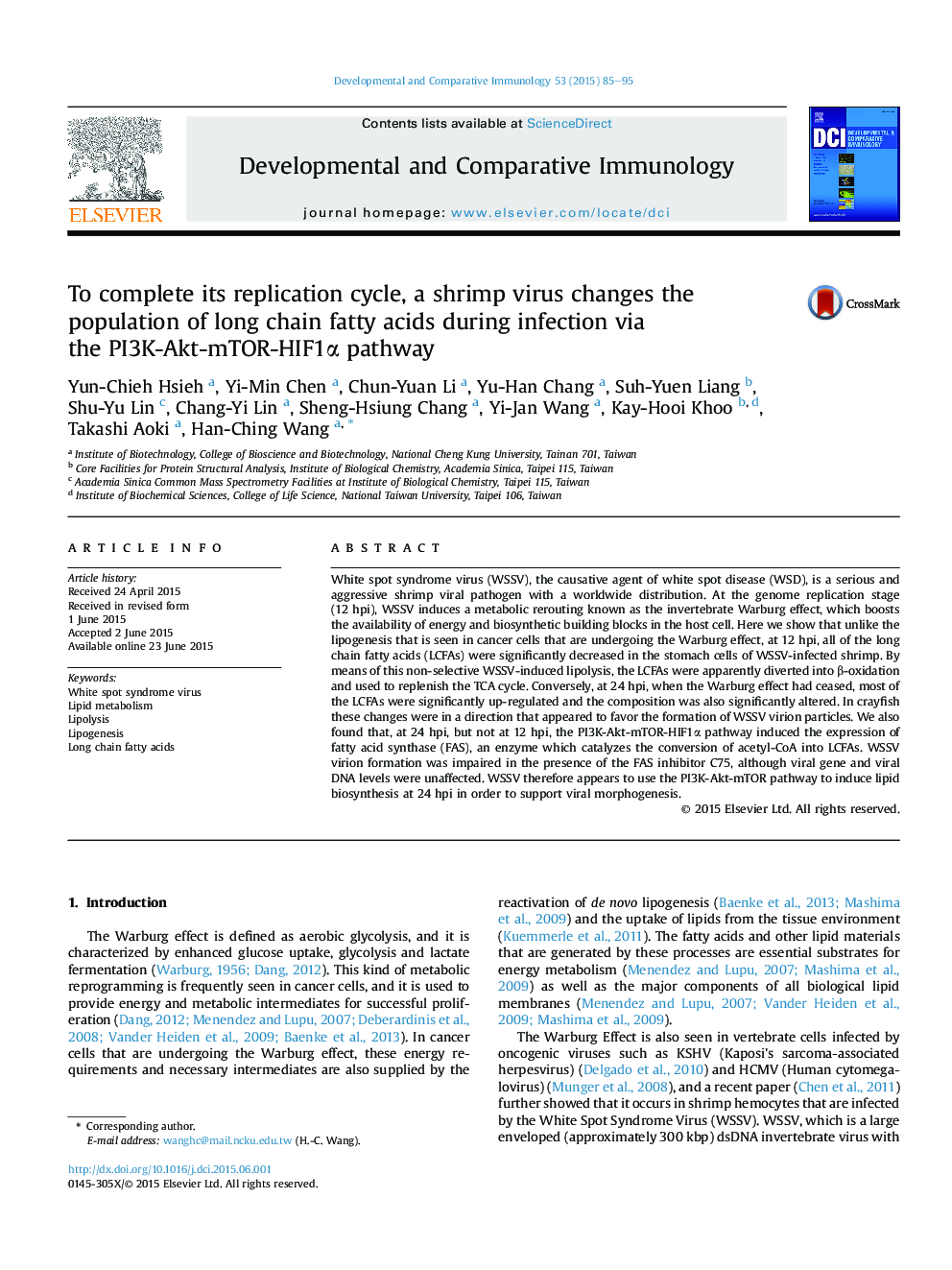| Article ID | Journal | Published Year | Pages | File Type |
|---|---|---|---|---|
| 10971395 | Developmental & Comparative Immunology | 2015 | 11 Pages |
Abstract
White spot syndrome virus (WSSV), the causative agent of white spot disease (WSD), is a serious and aggressive shrimp viral pathogen with a worldwide distribution. At the genome replication stage (12 hpi), WSSV induces a metabolic rerouting known as the invertebrate Warburg effect, which boosts the availability of energy and biosynthetic building blocks in the host cell. Here we show that unlike the lipogenesis that is seen in cancer cells that are undergoing the Warburg effect, at 12 hpi, all of the long chain fatty acids (LCFAs) were significantly decreased in the stomach cells of WSSV-infected shrimp. By means of this non-selective WSSV-induced lipolysis, the LCFAs were apparently diverted into β-oxidation and used to replenish the TCA cycle. Conversely, at 24 hpi, when the Warburg effect had ceased, most of the LCFAs were significantly up-regulated and the composition was also significantly altered. In crayfish these changes were in a direction that appeared to favor the formation of WSSV virion particles. We also found that, at 24 hpi, but not at 12 hpi, the PI3K-Akt-mTOR-HIF1α pathway induced the expression of fatty acid synthase (FAS), an enzyme which catalyzes the conversion of acetyl-CoA into LCFAs. WSSV virion formation was impaired in the presence of the FAS inhibitor C75, although viral gene and viral DNA levels were unaffected. WSSV therefore appears to use the PI3K-Akt-mTOR pathway to induce lipid biosynthesis at 24 hpi in order to support viral morphogenesis.
Related Topics
Life Sciences
Biochemistry, Genetics and Molecular Biology
Developmental Biology
Authors
Yun-Chieh Hsieh, Yi-Min Chen, Chun-Yuan Li, Yu-Han Chang, Suh-Yuen Liang, Shu-Yu Lin, Chang-Yi Lin, Sheng-Hsiung Chang, Yi-Jan Wang, Kay-Hooi Khoo, Takashi Aoki, Han-Ching Wang,
